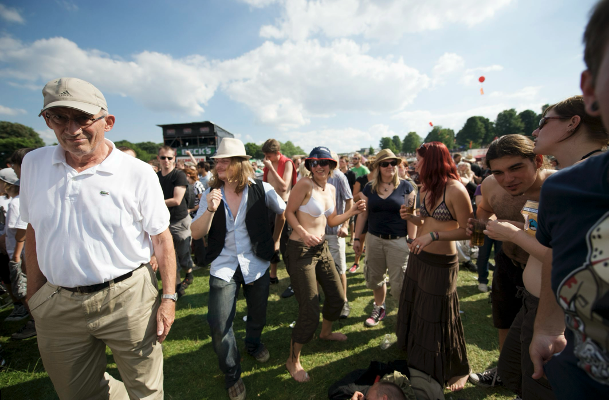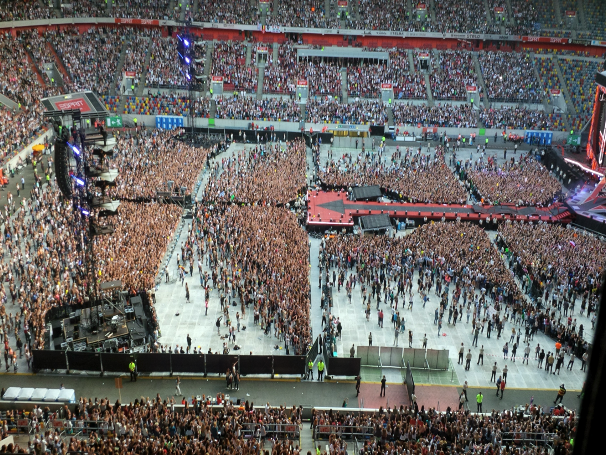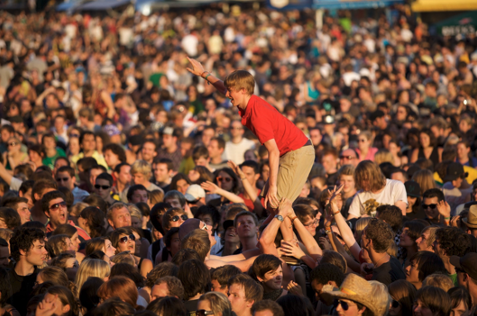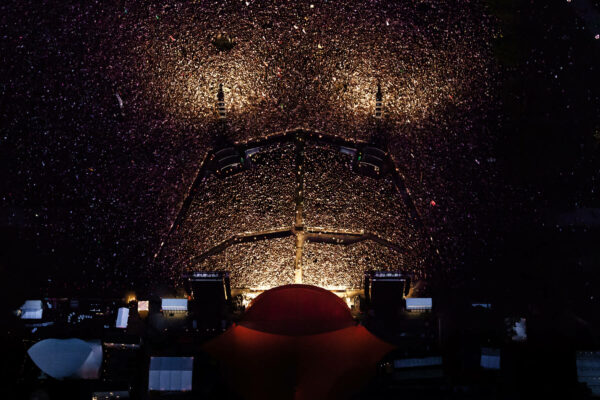Crowd Management: 3 The people
If you look at the “classic” definition of crowd management as “the systematic planning and monitoring of an orderly movement and accumulation of people” (Fruin, 1993) there are two starting points: people and a systematic planning approach.
The definition already shows what it is actually about: the human being as the centre of consideration.
The human being, in this case the visitor to an event, is unsurprisingly usually not a standard person with 60cm shoulder width and a standard walking speed of 1.2m / sec.
The visitor is slow – perhaps because he is dependent on walking aids or is accompanied by a small child. Or fast because they want to reach their destination as quickly as possible. They are in a bad mood or euphoric, drunk or sober, sometimes wearing a T-shirt and shorts, sometimes 3 jumpers and a coat. They actually have a space requirement of 0.085m2 (Oberhagemann, 2012) – or not.
All of this has an influence on the planning of the event – on the design of escape routes, on the calculation of flow rates, on the content and form of communication and on the deployment of staff.
Whether it’s an autograph session, an opera or a multi-day open-air festival – every event has its own special features in relation to its audience. These particularities must be taken into account in order to plan and organise a safe event that is satisfactory for everyone involved. It is important to consider what the visitor expects from the event – a question whose answer has a significant impact on the safety objectives to be formulated for the event.
Demographic Information: Age, Gender, Nationality

| Figure 1: Age is not necessarily a useful profile factor |
With regard to age, particular attention must be paid if the audience is particularly young or particularly old – although the determination of what “particular” means in a specific case must also always be made on an individual basis. In general, it can be said that the presence of children and young people poses a particular challenge when planning the event. It may mean complying with special regulations (e.g. a Youth Protection Act), but often also coping with emotional challenges (“teen band hysteria”), inexperience with event procedures or additional capacity requirements for the accompanying parents. It is less easy to assess age ‘upwards’: it is not possible to generalise about when someone is ‘particularly frail’ or even just ‘particularly slow’- close observation of the target group is all the more necessary.
Gender nowadays is an even more complex topic. Beginning with obvious measures like the number and distribution of necessary toilets to adequate control procedures for non-binary persons. Also, sexualised violence against persons of all genders has become something which has to be looked at in a proper crowd management plan.
Obviously, there also are special requirements with regard to nationality – in addition to the respective cultural characteristics- in particular to the communication channels and the language of the information provided (both in writing, e.g. on signage, and verbally in announcements or direct contact with law enforcement officers). Nationality can also give rise to certain risk factors, e.g. the presence of representatives of hostile nations.
Expected Number of Visitors and Distribution of Visitors on Site
The topic of “expected number of visitors” and “actual number of visitors” has been a relevant evaluation factor not only since a number of events (especially autograph sessions) made it into the media because the crowds exceeded the available capacity by far. For events with a limited number of people and space, it is essential to consider whether this capacity can be maintained, what measures are necessary for this and what happens if, despite these measures, more people turn up to the event than planned.
In addition to the absolute number of visitors, the distribution of visitors on and around the site is also important. The answer to the question of when how many people come to the event site and from which direction is also important in terms of calculating the available space capacities, necessary flow rates of the entrances, etc. It is also important for the safety planning of the event to answer the question of where on the event site how many people are present at what time – are the visitors all on the site at the same time? Are there any particular (timed) attractions that draw large numbers of visitors to a particular area at a particular time? Creating a visitor profile with regard to space utilisation can help to avoid bottlenecks or congestions.

| Figure 2: Visitor distribution in the context of a boy band concert |
While provisions for wheelchair users are also common practice at events outside of venues, the provision of suitable structures, e.g., for visitors with a visual impairment is still not common at all. Signage in Braille or guidance systems installed on the floor are rare, and evacuation procedures often do not take these special target groups into account.
Whether additional acoustic or visual support, barrier-free homepages or the use of barrier-free language – crowd management has to make sure that special needs are not only addressed but that measures are constantly being improved.
Arrival and Departure
Every audience has its own particular arrival and departure profile, which must be taken into account when planning the event. It is important to incorporate as much information as possible about the type and timing of arrivals and departures into the planning, both for the planning of car parks and public transport capacities, but also for the design of the admission areas.
With a young audience, for example, there is often an early arrival combined with a correspondingly early occupancy of the waiting areas in front of the entrances and the personnel capacities and care structures that may then be required. If mainly underage visitors are brought and picked up by their parents, this poses a particular challenge, especially on departure
This means that extensive preparations have to be made to bring together those picking up and those being picked up (e.g. setting up special car parks with waiting areas organised by letter, for example).

| Figure 3: Taking care of early arrivals |
Expected Behaviour
The visitors’ behaviour is not always easy to assess: what looks “dangerous” or “chaotic” to one person is part of a choreographed ritual specific to the target group to another. To ensure suitable measures are taken, it is important to consider the expected behaviour of the audience – especially in connection with the expected behaviour of the artist.
And if so, does this high dynamic pose a risk (for those involved and for others?) Is it to be expected that everyone will abide by the rules? Are arguments or even fights to be expected? There can be many reasons for this: from hostile groups of visitors to (excessive) alcohol and/or drug consumption.

______________________________________________________
Read all articles from this series on event safety:
Safety Planning for Events: An Introduction
The Risk Management Circle in the Context of Events: 1 Introduction
The Risk Management Circle in the Context of Events: 2 Risk Identification
The Risk Management Circle in the Context of Events: 3 Risk Assessment
The Risk Management Circle in the Context of Events: 4 Risk Response
The Risk Management Circle in the Context of Events: 5 Risk Monitoring and Review
The Risk Management Circle in the Context of Events: 6 Risk Mitigation
Crowd management: 1 An Introduction
Crowd Management: 2 The need of a systematic approach
Crowd Management: 3 The people
Crowd Management: 4 Safety by Design
Crowd Management: 5 The Ingress and Egress Areas
Emergency planning: Introduction
Emergency Management: 1 Emergency Plans
Emergency Management: 2 Scenarios
Emergency Management: 3 Learning from Disasters

